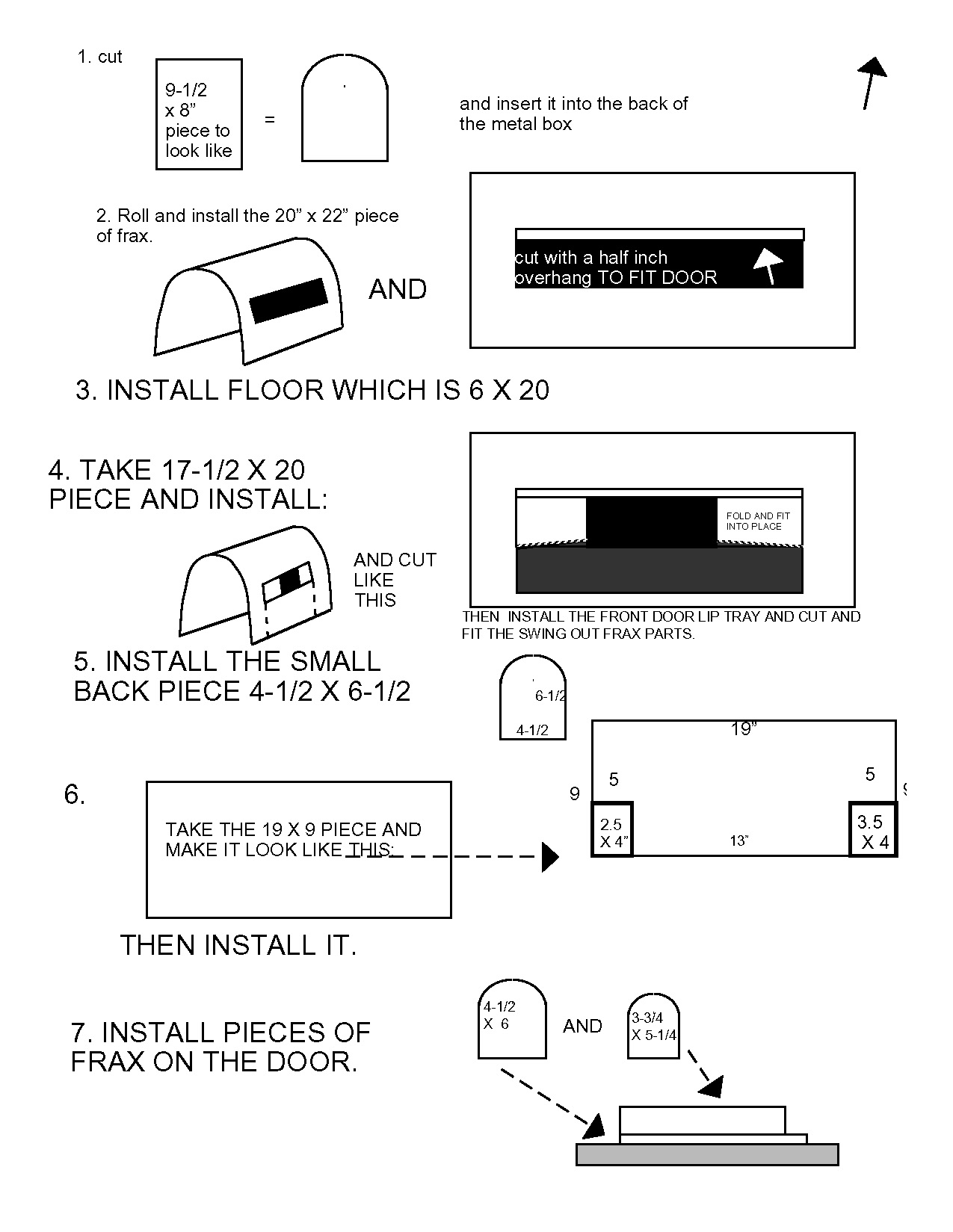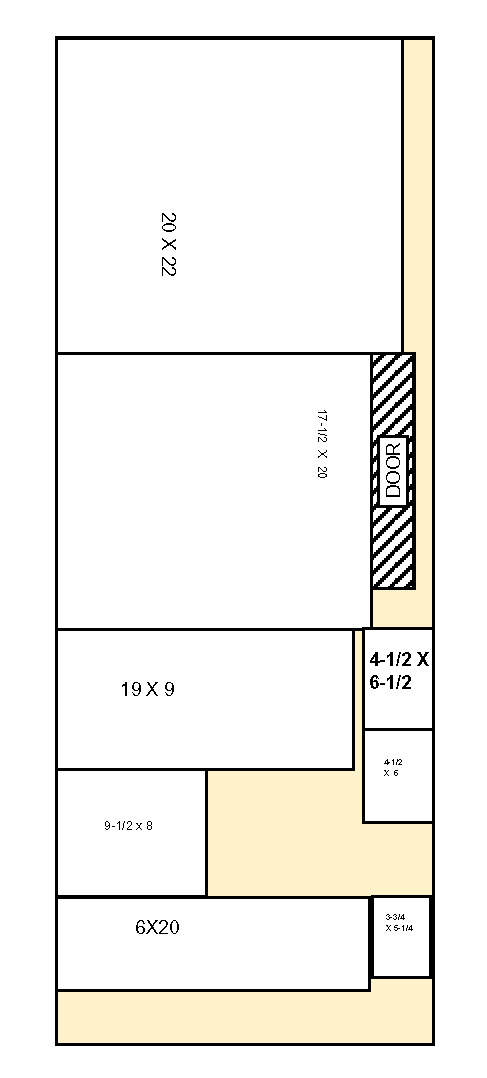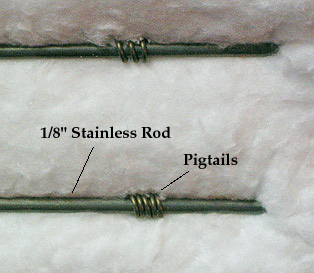

The frax is cut from a sheet of frax as it is unrolled off the bundle. Frax is generally sold in a 50 sq foot roll which measures 25 feet long x 2 feet wide and 1 inch thick. I prefer the 8# density x 2300 DEG. F. service duty rating.
Here the frax is shown as a pattern maker might cut cloth for a garment:

A few words to the wise: The ideas expressed here are meant for guidance, not a directive. When you work on your mailbox kiln, lay the materials out and do a little thinking for yourself. Plan the attack. Use a ruler. The mailbox I used might have slightly different dimensions than yours. Measure the parts and think about the project before you cut. I decline to be responsible for how these parts will fit into your box, but they did in mine. These are my notes that I use when I manufacture one of these kilns. So the idea here is I am sharing these notes with you. Please use them as a suggestion as to how you might solve the problem of construction.
The tools I use to frax out a box like this are a metal ruler (square), a mat knife and a little longer utility knife. All the cutting is done on a 1/4" plywood board set under the frax roll so when you cut the board does not dull the blade as much as a hard concrete floor would.
How to install the frax: Much of the frax will pressure fit, that is the shape will hold it in place. So try to cut your pieces accurately. The large sections that are unrolled inside the box shape are held in place by the floor section as it is pressed in place. There are two places where additional pinning or support is necessary and that is on both doors. The rear door is secured using a loop of 1/8" stainless (308 welding rod) secured using the pigtail method. (Wrap a wire around the 1/8" stainless rod and send it through the frax wall to be secured on the outside using sheet metal screws, just like attaching donuts to the outside (reference image of screw in shell below)) The long side door is also fraxed out the same using a couple of stainless rods to hold the frax in place. The pigtail method works great here too (see below). Attention!! Do not put this configuration next to a live electric element. Right? If you have a tricky area near electric use a mulite rod or fused quartz rod. The mulite is especially good for electrical insulation.
 |
 |